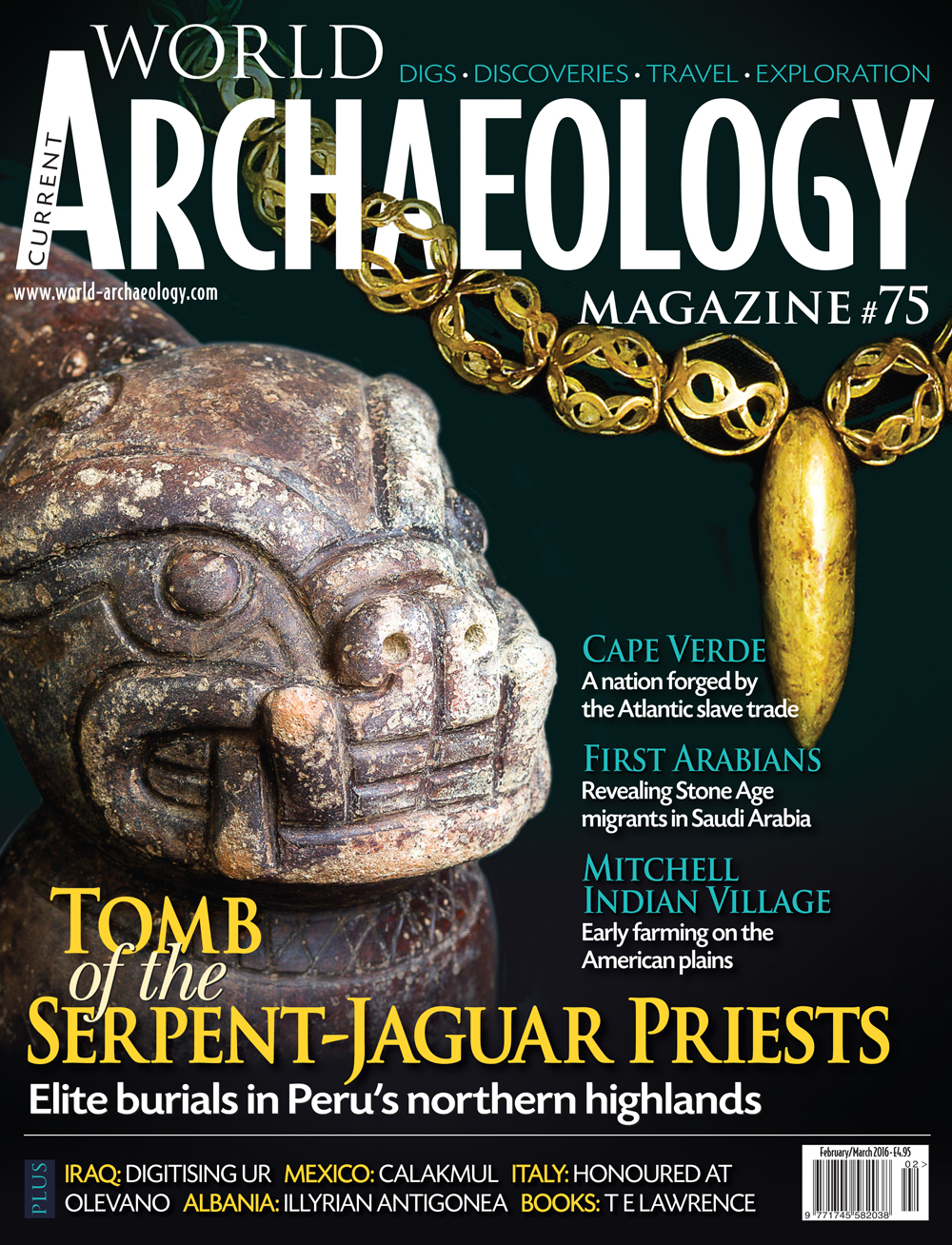The exotic Lady of Pacopampa and the recently discovered Serpent-Jaguar Priests were high ranking members of the Pacopampa ceremonial complex in the northern highlands of Peru. They were buried with luxury grave goods during highly ritualistic ceremonies, in prominent locations that ensured they would be remembered and revered long after death. These amazing finds, however, are out of kilter with the widely held view that this was a broadly egalitarian society, suggesting instead the emergence of a rigidly structured hierarchy ruled by a powerful and hugely wealthy elite.
Farming came comparatively late to the northern plains of North America. Archaeologists investigating the Mitchell Palaeolithic Indian Village in South Dakota have uncovered the first attempts by pioneer farmers to cultivate maize, a crop that has since come to dominate the region.
The first human migrations out of Africa crossed Arabia. But what remains of those early adventurers? Now, the Palaeodesert Project is exploring this long-neglected area, and uncovering an abundance of material that points to several waves of early hominin incursions across this vast and hostile space, before the eventual success of our own ancestors.
Santiago, one of the Cape Verde islands, lies on a major crossroads for the trans-Atlantic trade route. What remains of those wealthy times, when the capital city Cidade Velha played host to slavers and sailors?
In the early decades of the 20th century, Sir Leonard Woolley excavated the ancient city of Ur in Iraq, uncovering a wealth of treasures, which he documented in thousands of photographs. Now, the Ur Project, a collaboration between three museums – British, Penn, and Iraq – is digitising the archive, to create an invaluable resource that will be freely available to us all.

